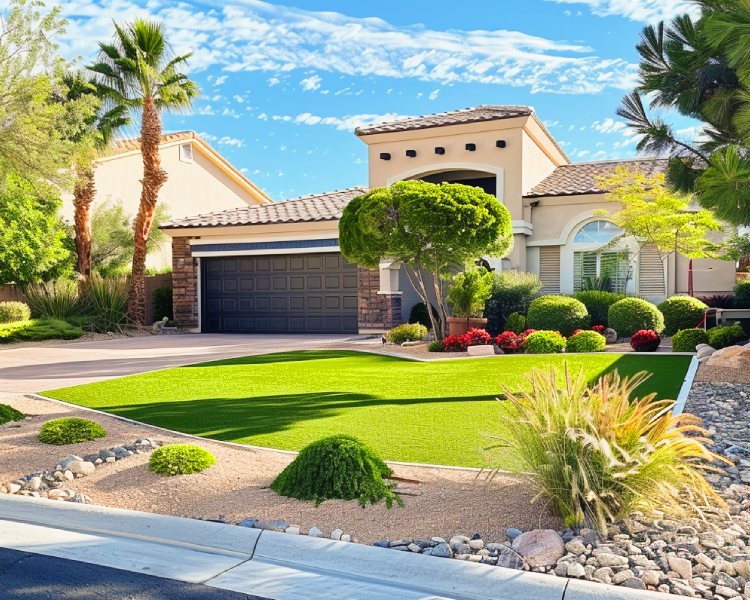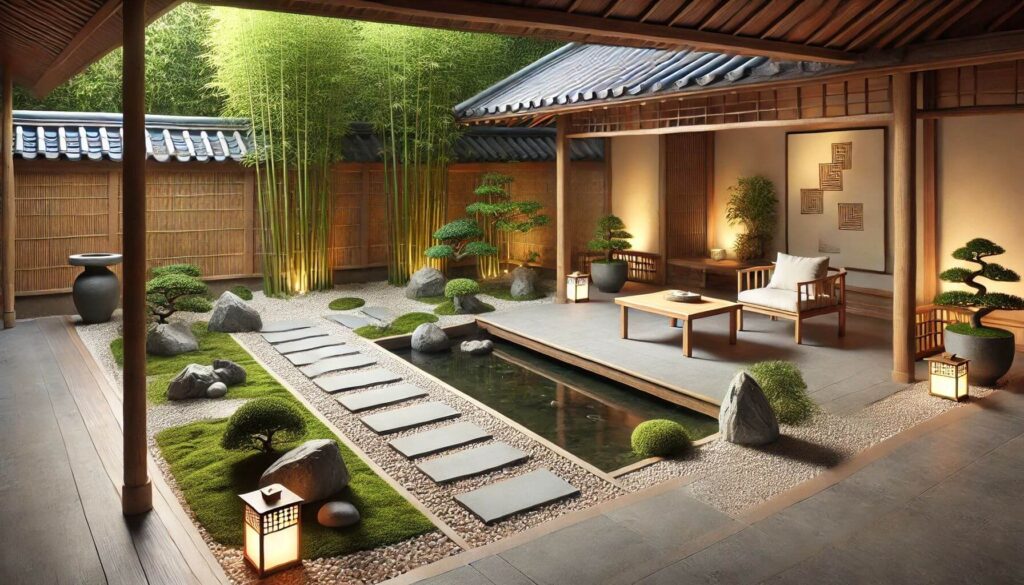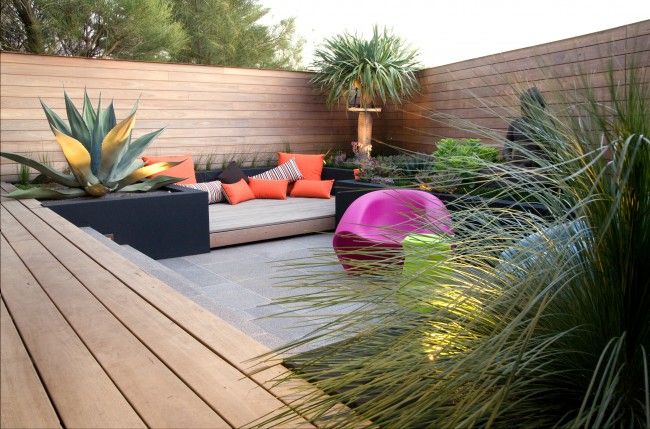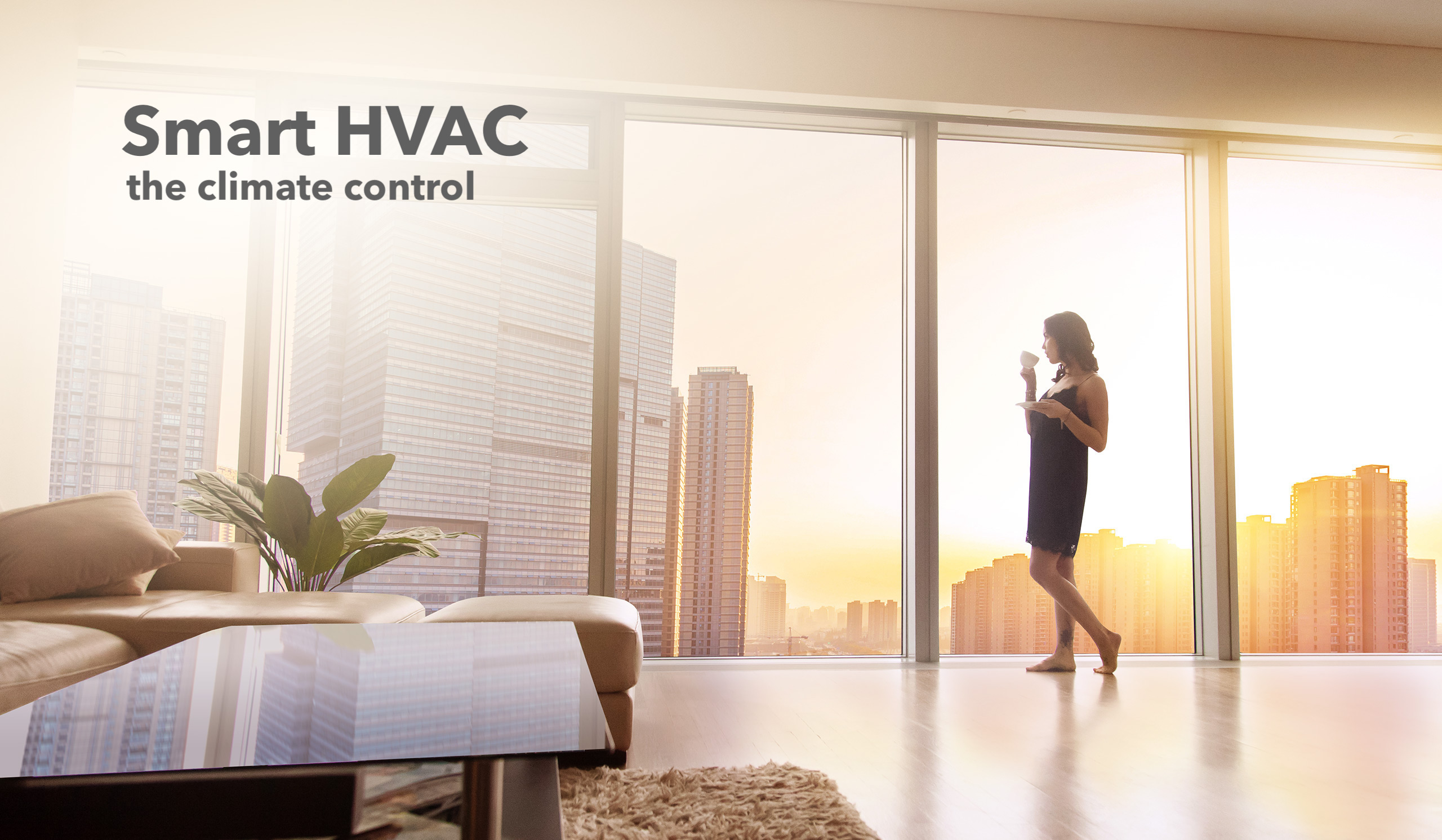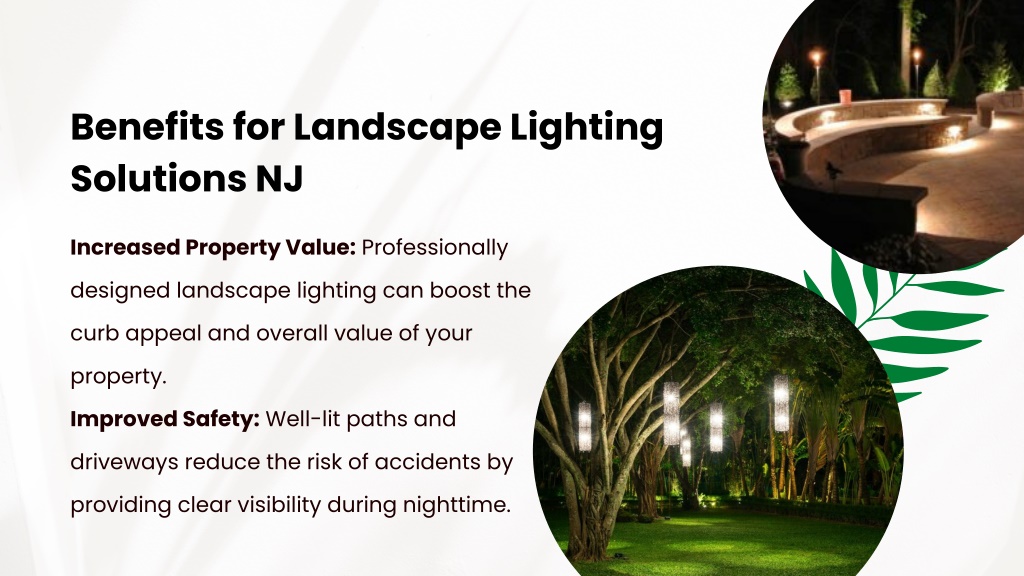
Illuminate Your World Responsibly: Sustainable Landscape Lighting Solutions for a Brighter Future
The world is changing, and with it, our understanding of responsibility. We’re becoming increasingly aware of our impact on the planet, and that awareness is driving us to make more sustainable choices in every aspect of our lives. From the food we eat to the cars we drive, sustainability is no longer a niche concern; it’s a fundamental principle guiding our decisions. This shift is particularly evident in the realm of home improvement, and one area where this is rapidly gaining traction is landscape lighting. For years, traditional landscape lighting has been a significant consumer of energy, contributing to light pollution and higher electricity bills. But now, there’s a better way. Sustainable landscape lighting solutions offer a path to a brighter, more beautiful outdoor space while minimizing our environmental footprint. This article will delve into the world of sustainable landscape lighting, exploring the benefits, technologies, and practical tips to help you illuminate your world responsibly.
Why Choose Sustainable Landscape Lighting?
The benefits of transitioning to sustainable landscape lighting extend far beyond just saving money on your electricity bill. It’s about making a conscious choice to protect the environment, enhance your property’s aesthetics, and improve your overall quality of life. Here’s a closer look at the key advantages:
Environmental Benefits
- Reduced Energy Consumption: This is perhaps the most significant benefit. Sustainable lighting solutions, particularly those using LEDs, consume significantly less energy than traditional incandescent or halogen lights. This translates to a lower carbon footprint and reduced reliance on fossil fuels.
- Minimized Light Pollution: Traditional landscape lighting often contributes to light pollution, which can disrupt nocturnal ecosystems, interfere with astronomical observations, and even affect human health. Sustainable lighting solutions, often featuring directional lighting and lower light output, minimize light spill and reduce this negative impact.
- Reduced Waste: LED lights have a significantly longer lifespan than traditional bulbs, reducing the frequency with which you need to replace them. This leads to less waste in landfills and conserves resources.
- Conservation of Resources: By using less energy, sustainable lighting helps conserve precious resources like water (used in power generation) and raw materials.
Economic Benefits
- Lower Electricity Bills: The energy efficiency of sustainable lighting translates directly into lower electricity bills. Over time, the savings can be substantial, especially when compared to the costs associated with traditional lighting systems.
- Reduced Maintenance Costs: LED lights and other sustainable options have a longer lifespan, which means you’ll spend less time and money on replacing bulbs and maintaining your lighting system.
- Increased Property Value: Sustainable features, including energy-efficient lighting, are becoming increasingly desirable to homebuyers. Installing sustainable landscape lighting can increase the value of your property.
Aesthetic and Lifestyle Benefits
- Enhanced Curb Appeal: Well-designed landscape lighting can dramatically enhance the beauty of your home and garden, highlighting architectural features, accentuating landscaping elements, and creating a welcoming atmosphere.
- Improved Safety and Security: Sustainable landscape lighting can improve safety and security by illuminating pathways, driveways, and other areas, deterring potential intruders and preventing accidents.
- Increased Enjoyment of Outdoor Spaces: With sustainable lighting, you can extend the hours you can enjoy your outdoor spaces, creating a comfortable and inviting environment for entertaining, relaxing, and enjoying the beauty of your surroundings.
Key Technologies in Sustainable Landscape Lighting
The evolution of sustainable landscape lighting has been driven by advancements in technology. Several key technologies are at the forefront of this transformation:
LED Lighting
LED (Light Emitting Diode) lighting is the cornerstone of sustainable landscape lighting. LEDs are incredibly energy-efficient, converting a much higher percentage of electricity into light than traditional bulbs. They also have a significantly longer lifespan, often lasting for tens of thousands of hours. Here’s why LEDs are so important:
- Energy Efficiency: LEDs use up to 75% less energy than incandescent bulbs and 50% less energy than halogen bulbs.
- Long Lifespan: LEDs can last for 25,000 to 50,000 hours or more, significantly reducing the need for replacements.
- Directional Lighting: LEDs emit light in a specific direction, minimizing light spill and allowing for more precise illumination.
- Versatility: LEDs are available in a wide range of colors, brightness levels, and styles, allowing for creative and customizable lighting designs.
Solar-Powered Lighting
Solar-powered lighting takes sustainability to the next level by harnessing the power of the sun. These systems use solar panels to convert sunlight into electricity, which is then stored in batteries to power the lights. Here’s what you should know about solar-powered lighting:
- Renewable Energy: Solar-powered lighting uses a completely renewable energy source, eliminating the need for electricity from the grid.
- Easy Installation: Solar lights are typically easy to install, requiring no wiring or electrical connections.
- Cost-Effective: While the initial investment in solar lights can be higher, the long-term cost savings are significant due to the elimination of electricity bills.
- Reduced Environmental Impact: Solar-powered lighting eliminates the carbon emissions associated with electricity generation.
- Limitations: The performance of solar lights can be affected by weather conditions and the amount of sunlight available.
Smart Lighting Systems
Smart lighting systems offer advanced control and customization options for sustainable landscape lighting. These systems often use Wi-Fi or Bluetooth to connect to your smartphone or other devices, allowing you to control the lights remotely, set schedules, and adjust brightness levels. Here’s why smart lighting is becoming increasingly popular:
- Customization: Smart lighting systems allow you to customize your lighting design to meet your specific needs and preferences.
- Energy Efficiency: Smart lighting systems can be programmed to turn lights on and off automatically, optimizing energy usage.
- Convenience: You can control your lights from anywhere, making it easy to adjust settings or turn lights on and off.
- Integration: Smart lighting systems can often be integrated with other smart home devices, such as security systems and voice assistants.
Designing Your Sustainable Landscape Lighting System
Designing a sustainable landscape lighting system requires careful planning and consideration. Here are some key steps to guide you through the process:
1. Assess Your Needs and Goals
Before you begin, take some time to assess your needs and goals for your landscape lighting system. Consider the following questions:
- What areas do you want to illuminate? (e.g., pathways, driveways, trees, architectural features)
- What is the primary purpose of the lighting? (e.g., safety, security, aesthetics)
- What is your budget?
- What level of automation and control do you desire?
Answering these questions will help you determine the appropriate types of lights, the number of lights, and the overall design of your system.
2. Choose the Right Lighting Fixtures
Select lighting fixtures that are energy-efficient, durable, and aesthetically pleasing. Consider the following types of fixtures:
- Path Lights: Ideal for illuminating walkways and driveways, path lights provide safety and enhance curb appeal.
- Spotlights: Used to highlight specific features, such as trees, sculptures, or architectural details.
- Floodlights: Provide broad illumination for larger areas, such as patios or yards.
- Well Lights: Recessed lights that are installed flush with the ground, providing a subtle and elegant lighting effect.
- String Lights: Create a festive and inviting atmosphere, perfect for patios, decks, and outdoor entertaining areas.
3. Plan Your Lighting Layout
Carefully plan the layout of your lighting system to achieve the desired effect. Consider the following tips:
- Layer Your Lighting: Use a combination of different types of lights to create a layered lighting effect.
- Highlight Key Features: Use spotlights to highlight focal points, such as trees, sculptures, or architectural details.
- Illuminate Pathways and Driveways: Use path lights or other low-level lighting to illuminate pathways and driveways, ensuring safety and visibility.
- Consider Light Levels: Use lower light levels in areas where you want to create a relaxing atmosphere, and higher light levels in areas where you need more visibility.
- Avoid Light Pollution: Direct light downwards and use shields to minimize light spill and reduce light pollution.
4. Select the Right Bulbs
Choose LED bulbs with the appropriate color temperature and brightness for your needs. Here are some factors to consider:
- Color Temperature: Measured in Kelvin (K), color temperature determines the warmth or coolness of the light. Choose a color temperature that complements your landscaping and creates the desired atmosphere. (e.g., 2700K-3000K for a warm, inviting glow; 4000K-5000K for a cooler, brighter light)
- Brightness: Measured in lumens (lm), brightness determines the intensity of the light. Choose the appropriate brightness level for each area of your landscape.
- Wattage: While wattage is not the primary indicator of brightness for LEDs, it’s still a factor to consider. Choose LED bulbs with a wattage that provides the desired brightness while minimizing energy consumption.
- CRI (Color Rendering Index): A higher CRI (closer to 100) means the light will render colors more accurately.
5. Consider Automation and Control
If you want to automate your lighting system, consider using a smart lighting system or timers. These systems allow you to control your lights remotely, set schedules, and adjust brightness levels. This can improve energy efficiency and enhance convenience.
6. Professional Installation vs. DIY
Deciding between professional installation and a DIY approach depends on your skills, budget, and the complexity of your project. Professional installation is recommended for complex systems or if you’re not comfortable working with electrical wiring. DIY installation can be a cost-effective option for simpler projects, but be sure to follow all safety guidelines and local building codes.
Tips for Maximizing the Sustainability of Your Landscape Lighting
Beyond choosing energy-efficient products, there are several other steps you can take to maximize the sustainability of your landscape lighting system:
1. Use Timers and Sensors
Use timers and sensors to automatically turn lights on and off, preventing them from staying on unnecessarily. This can significantly reduce energy consumption and extend the lifespan of your bulbs.
2. Choose Directional Lighting
Use directional lighting fixtures to focus light where it’s needed and minimize light spill. This reduces light pollution and improves energy efficiency.
3. Consider Motion Sensors
Install motion sensors to activate lights only when needed, such as along pathways or near entrances. This can further reduce energy consumption and enhance security.
4. Regularly Maintain Your System
Regularly inspect your lighting system for damage, replace burnt-out bulbs, and clean fixtures to ensure optimal performance. This will extend the lifespan of your system and maintain its energy efficiency.
5. Stay Informed About New Technologies
The landscape lighting industry is constantly evolving. Stay informed about new technologies and products that can improve the sustainability of your system.
6. Evaluate Your Lighting Needs
Re-evaluate your lighting needs periodically. As your landscaping evolves or your needs change, you may need to adjust your lighting system to ensure it’s still meeting your goals.
Real-World Examples of Sustainable Landscape Lighting
To illustrate the possibilities of sustainable landscape lighting, let’s look at some real-world examples:
Example 1: Residential Garden
A homeowner wanted to enhance the beauty of their garden while minimizing their environmental impact. They chose LED path lights to illuminate the walkways, solar-powered spotlights to highlight trees and sculptures, and smart lighting controls to manage the system. The result was a stunning garden that was both beautiful and energy-efficient.
Example 2: Commercial Property
A business owner wanted to improve the curb appeal and security of their property. They installed LED floodlights to illuminate the parking lot, LED spotlights to highlight the building’s facade, and motion sensors to activate lights in high-traffic areas. This solution improved security, reduced energy consumption, and enhanced the overall appearance of the property.
Example 3: Community Park
A local park wanted to create a safe and inviting environment for visitors while minimizing their environmental impact. They installed solar-powered path lights along the walkways, LED spotlights to highlight trees and landscaping features, and smart lighting controls to manage the system. The park was transformed into a beautiful and sustainable space that could be enjoyed by the community.
The Future of Sustainable Landscape Lighting
The future of sustainable landscape lighting is bright. As technology continues to advance, we can expect to see even more innovative and efficient solutions. Here are some trends to watch:
- Improved LED Technology: Expect even more energy-efficient and versatile LED bulbs.
- Increased Solar Power Integration: Solar-powered lighting will become more affordable and efficient.
- Smarter Lighting Systems: Smart lighting systems will become more sophisticated and integrated with other smart home devices.
- Focus on Design and Aesthetics: Designers will continue to create beautiful and functional lighting fixtures that complement any landscape.
- Emphasis on Biodiversity: Lighting designs will consider the impact on local ecosystems, minimizing light pollution and protecting wildlife.
As we move forward, sustainable landscape lighting will play an increasingly important role in creating a more beautiful, energy-efficient, and environmentally friendly world.
Conclusion: Embracing a Brighter and Greener Future
Sustainable landscape lighting is more than just a trend; it’s a commitment to a brighter and greener future. By choosing energy-efficient technologies, designing thoughtfully, and embracing smart controls, you can transform your outdoor spaces into beautiful, safe, and environmentally responsible havens. From reducing your carbon footprint to enhancing your property’s value, the benefits are clear. So, take the first step towards illuminating your world responsibly and enjoy the beauty and functionality of sustainable landscape lighting for years to come.
Embrace the change. Embrace sustainability. Embrace a brighter future, one beautifully lit landscape at a time.
